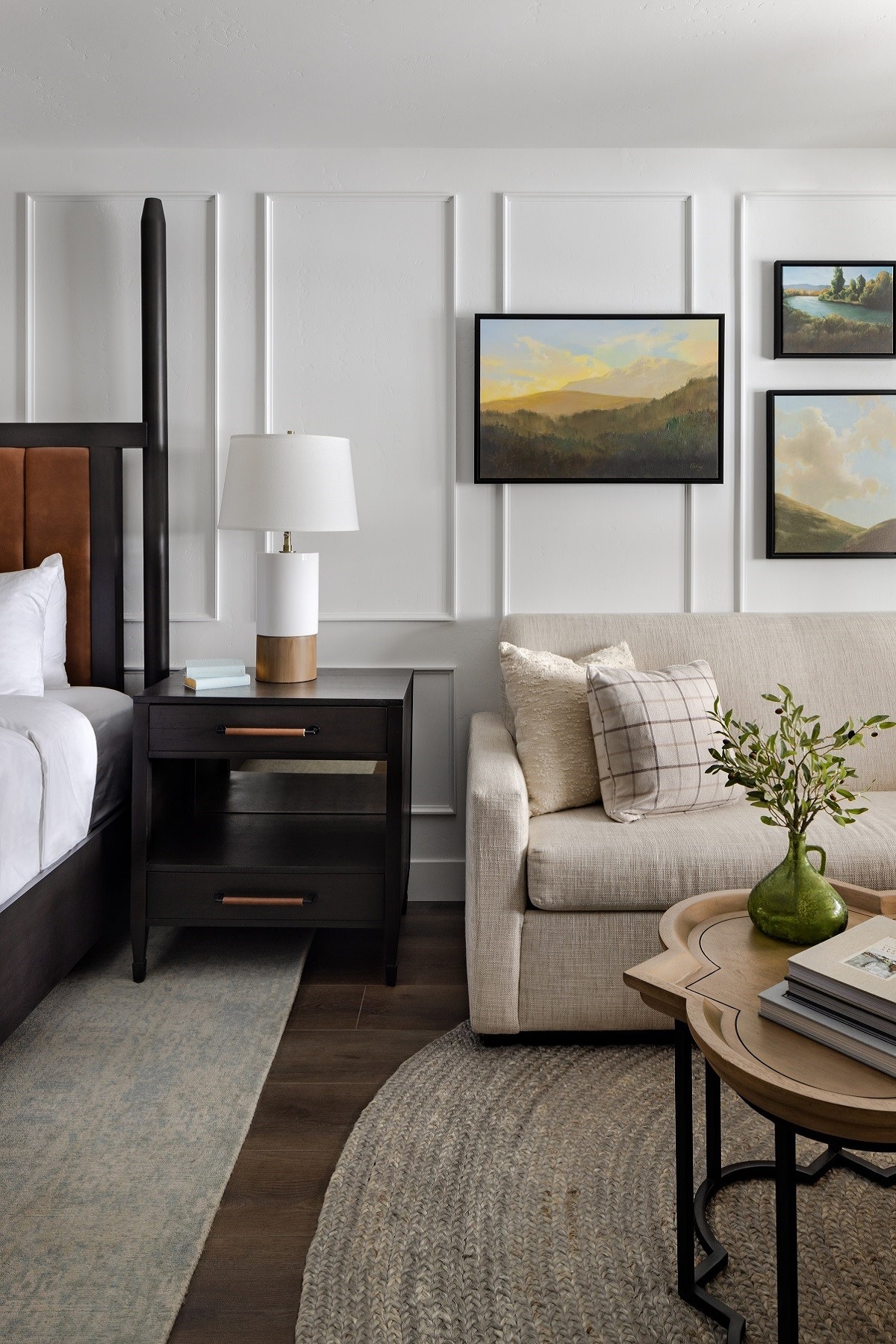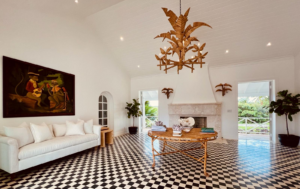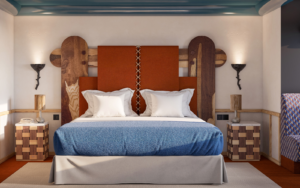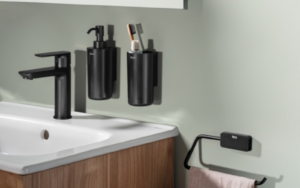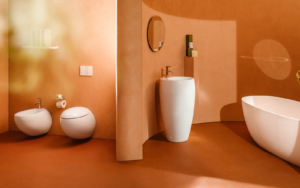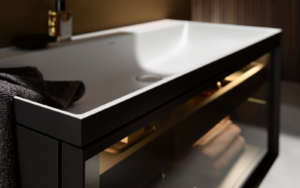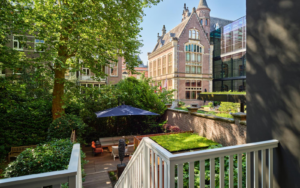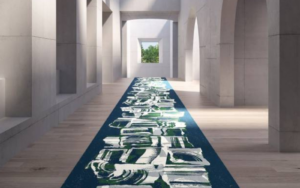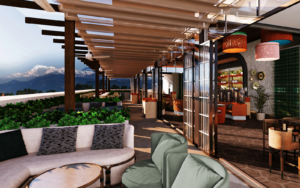Kari Bennett, the visionary CEO and Founder of the design firm EDGEiD, talks us through the importance of creating community to create truly liveable hospitality destinations…
Shared experiences often begin with shared spaces. As a designer, I strongly believe that third places are immensely important in helping us to build stronger communities, improve collaboration, and cultivate meaningful connections. Below are three key ideas that guide us at EDGEiD on how best to create inviting third places through thoughtful design.
Consider Your Community
A third place is intended to be a gathering point outside of the home and workplace. It is an environment meant for relaxation and engagement with others. As I reflect on central gathering points I reminisce fondly over my time in Italy and their lively Piazzas. These Piazzas are nestled amidst the vibrant energy and bustling activity of a city. They are the heart and soul of the community and offer a shared space for people from all walks of life to converge. Piazzas transcend barriers of age, ethnicity, and background.
As a designer, we should aim to bring heart and soul into the third places we design. The best way to do this is to consider the wants and needs of those who will be using these spaces. We must invite community members to participate in the design process. By opening a dialogue with the community designers, architects, and planners can ensure that their creations reflect the unique needs, values, and cultural heritage of the people they serve. Incorporate art, décor, and design elements that reflect the local community and its values. This can help foster a sense of ownership and pride among users. Community involvement leads to more inclusive and sustainable outcomes. This is the best way to craft a third space that hums with a familiar and inviting tune.
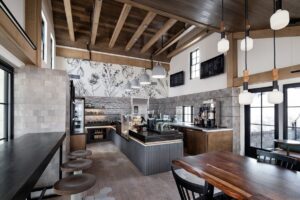
Image credit: EDGEiD
Craft for Collaboration
Our third spaces should be community hubs that foster collaboration. Collaboration is the spark of life. Much like moths drawn to a flame, we gravitate towards environments that resonate with our collective humanity, where creative energies are ignited, and collaboration flourishes. Our surroundings serve as a wellspring of inspiration. When we find ourselves in environments that are truly special and captivating, our creative energies burst, and our potential for inspiration knows no bounds. Vibrant and stimulating surroundings encourage open dialogue, experimentation, and the exploration of diverse ideas. Such environments nurture authentic connections, fostering a culture of trust and mutual support among collaborators. Conversely, uninspiring environments may stifle collaboration, hindering the potential for innovation.
To design with collaboration in mind we must first consider the architectural layout. Openness in design can encourage spontaneous interactions and allow people to move around comfortably. Additionally, providing flexible furniture arrangements and varied seating options allows people to accommodate different group sizes and activities.
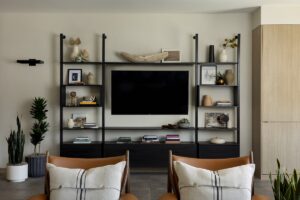
Image credit: EDGEiD
Integrating digital technologies and interactive tools into the built environment can further enhance collaboration by enabling real-time communication and collaboration among remote teams.
Most importantly, is designing a space people feel comfortable in. Incorporate elements of biophilic design, such as natural light, greenery and organic shapes. Plants and natural lighting help to create a refreshing environment that can boost creativity and promote feelings of calm and tranquility. Additionally, choose colours and décor that promote a sense of openness, warmth, and inspiration. Vibrant and stimulating surroundings encourage open dialogue.

Image credit: EDGEiD
Nurture Connection
As an adult juggling work, family, hobbies and the everyday hustle, I find myself immersed in a world brimming with limitless A.I. potential and experiences that sometimes prioritise efficiency over genuine human connection. In this rapidly evolving landscape, the mantra seems to be ‘faster, not better’. Yet amidst the clamour for speed, there’s an undeniable yearning for authenticity, for something tangible and real.
Automated phone calls and self-checkout systems may streamline tasks, but they lack the warmth and empathy of human interaction. We crave meaningful connections, the simple gesture of someone asking about our day, the opportunity to engage with new faces and share experiences. During a time where connecting with others is becoming more and more difficult, third places are essential. These spaces are the heart and soul of design. Crafting the soul of a space entails caring deeply about the entirety of the experience, not just isolated elements. It resides in the meticulous attention to detail, woven seamlessly into every facet.

Image credit: EDGEiD
These spaces ultimately must cultivate connection. As designers it is paramount that these shared spaces are neutral ground and welcoming to individuals from all backgrounds. Design the space to be accessible to everyone including those with physical disabilities. This type of environment can encourage sharing of different perspectives and foster a sense of belonging, understanding and mutual respect among community members. If possible, include a café or snack area. Food and drinks are natural conversation starters and can make the space feel more welcoming and communal. Prioritize interaction within the space before its official opening, allowing for adjustments to be made based on user feedback and observation.
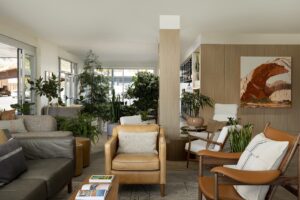
Image credit: EDGEiD
At EDGEiD, we conceive spaces that reflect our very essence. These environments serve as an extension of our identity, evoking a tangible sense of belonging. Through design, we strive to encapsulate this essence, allowing others to share in its resonance. We aim not only for visitors to perceive spaces as we envision them but to also feel the profound connection etched into their very fabric.
The hallmark of success lies in designing spaces that facilitate connection for people, embracing diversity, creating tangible experiences that engage all senses. Public spaces serve as vibrant hubs that symbolise the heart and soul of a community, fostering inclusivity and unity. Collaboration thrives in environments that inspire creativity and authentic connections, highlighting the crucial role of surroundings in shaping collaborative efforts. Finally, amidst the fast-paced world prioritising efficiency, there is a resounding call for authentic human connection, reminding us of the profound impact of genuine interactions in our lives. By prioritising community, embracing collaboration, and fostering genuine connections, we can create spaces that resonate with people’s identities and foster a sense of belonging, enriching the human experience.
Main image credit: EDGEiD


